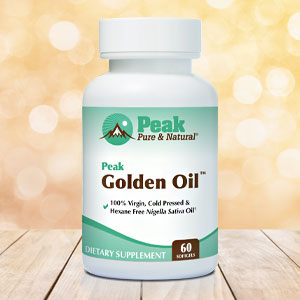Certain types of body fat are better than others.
White fat isn’t one of them. It accounts for more than 90 percent of the body’s fat and amounts to stored calories.
If those calories don’t get burned up, that fat just keeps building up on our bellies, buttocks and thighs — and around our internal organs where it’s termed “visceral fat.”
Then there are brown and beige fats — the “good” types…
Brown fat converts calories into heat. It gets activated when we need that energy to get warm, like when we’re exposed to cold.
People with more brown fat have less visceral fat and are less likely to have conditions like fatty liver and diabetes.
But the thing we probably appreciate the most about brown fat is that it’s key to cutting down on white fat. In fact, the more brown fat you have, the healthier the distribution of white fat in your body.
Beige fat are white fat cells that are in the process of converting to brown fat, and they behave much as brown fat cells do.
Scientists previously thought that only newborn humans and small animals like mice had brown fat. But research has since shown that some adults have brown fat throughout their lives.
So wouldn’t it be nice if they could help us figure out how to use it to our benefit? That’s exactly what they hope to do…
Brown fat’s ‘off switch’
A group of European researchers discovered a protein named AC3-AT that, when activated is responsible for switching brown fat “off” and stopping it from burning calories.
“As AC3-AT is found not only in mice but also in humans and other species, there are direct therapeutic implications for humans,” says co-author, Ronja Kardinal, a Ph.D. student at the University of Bonn.
“When we investigated mice that genetically didn’t have AC3-AT, we found that they were protected from becoming obese, partly because their bodies were simply better at burning off calories and were able to increase their metabolic rates through activating brown fat,” says Hande Topel, first author of the study and a senior postdoc at the University of Southern Denmark and the Novo Nordisk Center for Adipocyte Signaling.
“Looking ahead, we think that finding ways to block AC3-AT could be a promising strategy for safely activating brown fat and tackling obesity and related health problems,” Topel adds.
Interestingly, the study also identified other unknown protein/gene versions that respond to cold exposure in a way similar to AC3-AT.
“However, further research is needed to elucidate the therapeutic impact of these alternative gene products and their regulatory mechanisms during BAT [brown adipose tissue] activation”, says co-corresponding author Prof. Dagmar Wachten, Co-Director of the Institute of Innate Immunity at the UKB and member of the Cluster of Excellence ImmunoSensation2 and the Transdisciplinary Research Areas “Modelling” and “Life & Health” at the University of Bonn.
Enhancing your brown fat stores
As promising as this research is, it will be years before it results in any sort of therapeutic options. But if you feel left out in the cold, that’s not such a bad thing…
Although the prevalence of brown fat decreases with age, it can still be activated. And when it is, it can help to enhance the rate of metabolism and help stabilize weight loss.
I’ve written previously about ways to stoke your body’s fat-burning furnace. One is through cold exposure. This includes things like taking cold showers, turning down the thermostat in the winter and even sticking your feet in an ice bath.
Exercise is another fantastic way to get that brown fat working. One study shows that during exercise, brown fat signals the muscle to take up more fatty acids to use as fuel. Irisin, a hormone also released during exercise can help white fat cells turn beige.
Some foods and specific nutrients can also help stoke that brown fat furnace:
One final caveat: you’ll want to control inflammation in your body since it can block brown fat activation. My colleague Virginia Tims-Lawson lays out some steps to combat that inflammation so that you can truly harness the power of turning your white fat brown.
Sources:
Breakthrough in brown fat research: Researchers from Denmark and Germany have found brown fat’s “off-switch” — EurekAlert!
Cold-induced expression of a truncated adenylyl cyclase 3 acts as rheostat to brown fat function — Nature Metabolism
Read full article here




